Which Is The Best Wood For Butcher Blocks? (With Pictures)
-

- Last updated:
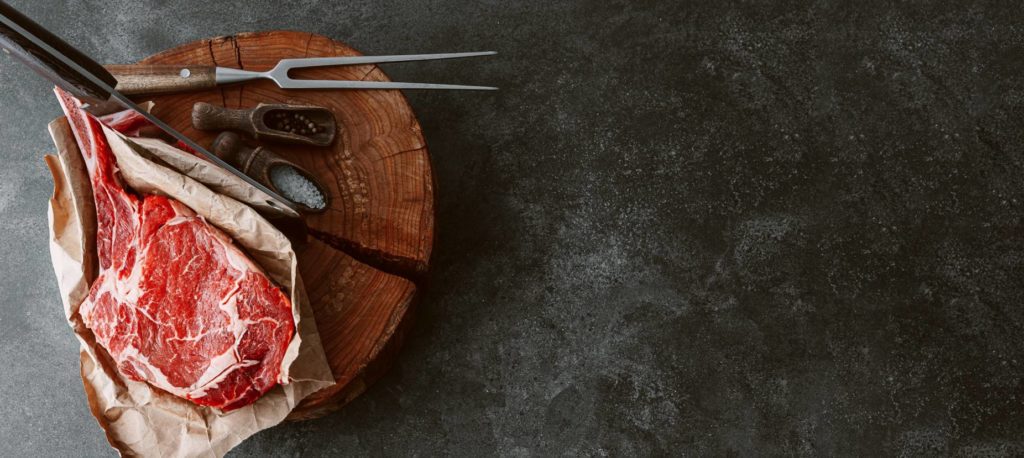
Traditionally, a butcher block is a heavy-duty piece of thick wood, on which a butcher would chop and cleave large pieces of meat. The wood had to be very strong to withstand vigorous and regular use without becoming damaged. It also needed to be easy to maintain and shouldn’t harbor bacteria.
In modern homes, the term butcher block is most often used to refer to a particular style of countertop, but standalone butcher blocks are still very common. They do need regular maintenance, but they can also be sanded and treated, so they are easy to repair.
Let’s take a look at some of the best woods for butcher blocks, and learn something about the hardness rating of wood.
 Top 6 Butcher Block Woods
Top 6 Butcher Block Woods
Below are 6 choices of wood for a butcher block countertop or cutting board:
1. Maple
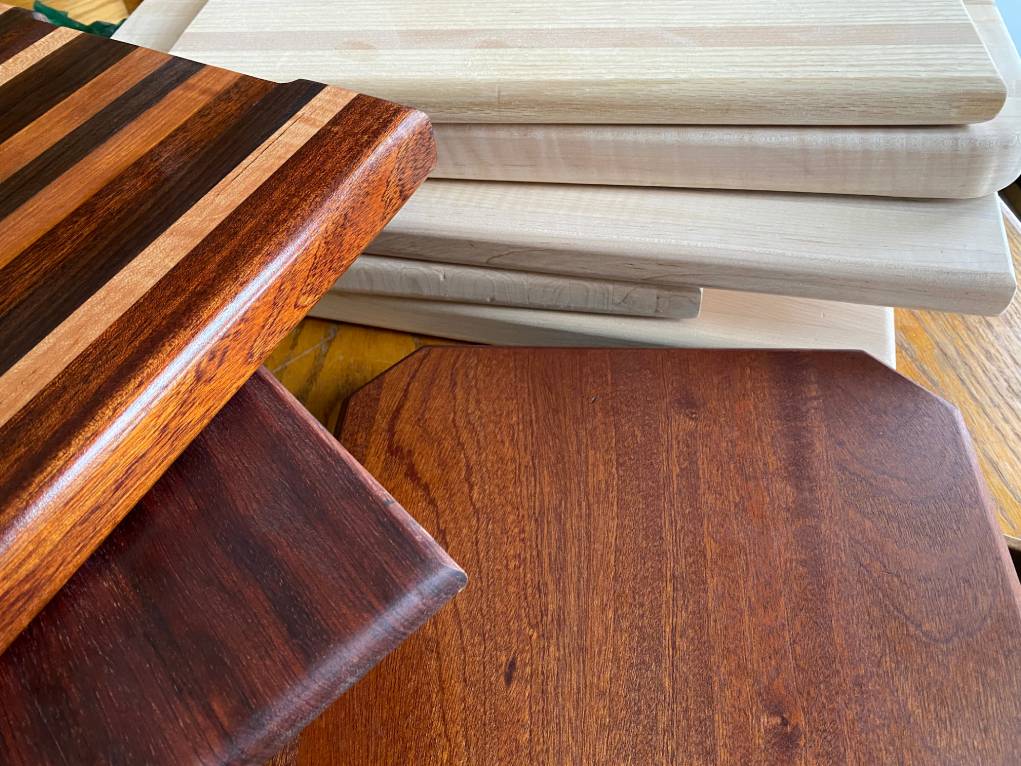
Maple is arguably the most commonly used wood to make butcher block. Hard maple has a high Janka hardness rating, approximately 1,450 lbf. This is high enough that it won’t be easily damaged with regular use, but not so high as to regularly damage knife blades. It is food-safe because it has close pores that won’t encourage bacterial growth, and this also means that it is difficult to stain the surface. However, it does have some drawbacks. The light color means that if the surface does stain, it will be clearly visible, and Maple costs more than other timbers like beech and is prone to some shrinking.
- Hard enough to resistant most scratches and knocks
- Soft enough that it won’t dull knife blades
- Close pores prevent bacteria build-up
- Doesn’t stain easily
- Pricey
- When stains do occur, they are highly visible
- Prone to shrinkage
2. Beech
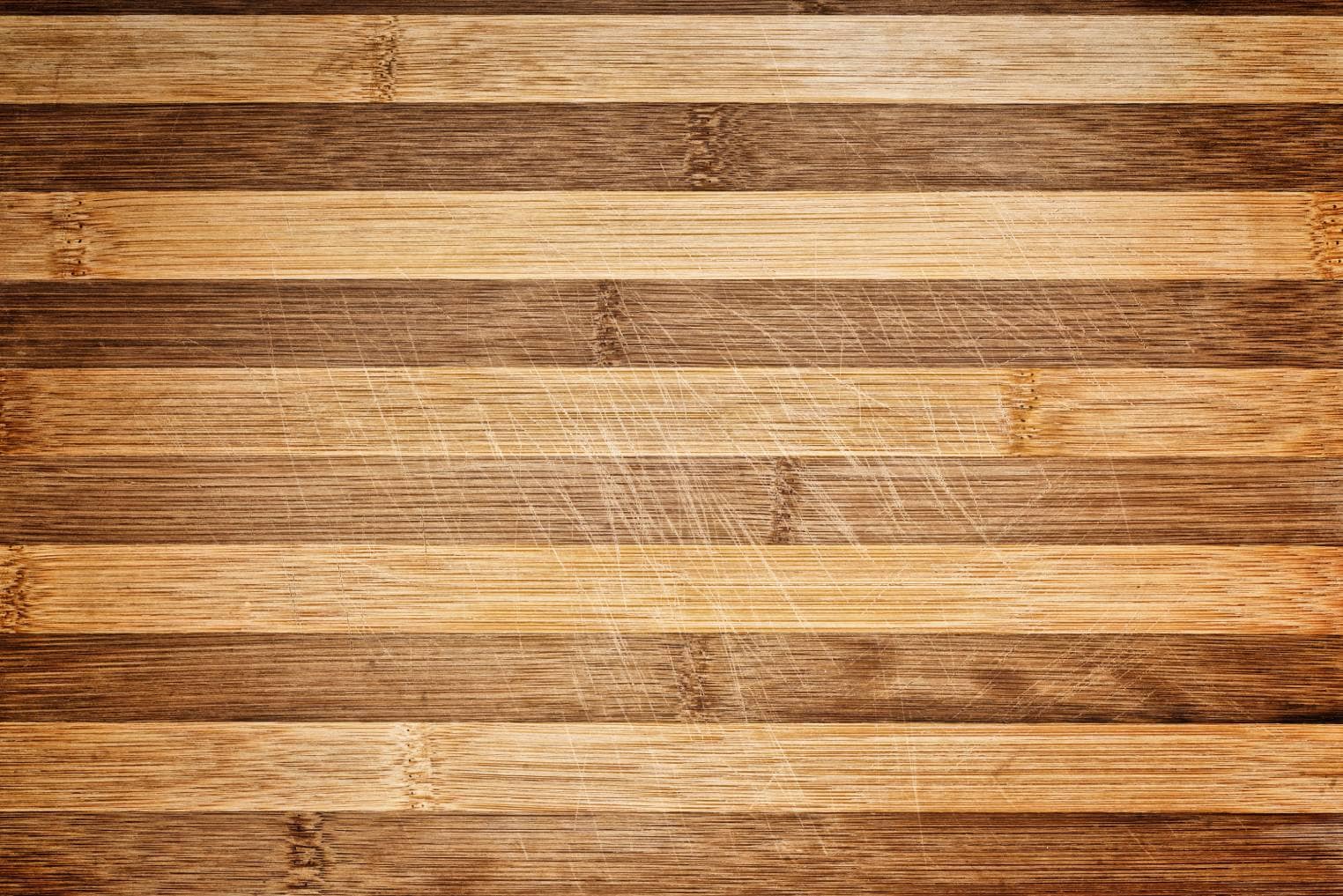
With a hardness rating of 1,300 lbf, beech is slightly softer than Maple. This means that it is delicate on knives, but as a true butcher block it wouldn’t withstand cleavers and regular, heavy use as well as some harder woods. It does have close pores, although maple is more effective at preventing moisture and bacteria buildup, but beech is less expensive. It is easier to stain beech than maple, and this means that you will have to wipe up and clear up quickly because beech, which has a nice warm glow, is light enough that stains will show up prominently.
- Cheap to buy
- Gentle on knives
- Reasonable bacteria and moisture resistance
- Stains show up
- Prone to shrinking
- Can become damaged with heavy use
3. Walnut

While not quite spongy, walnut’s hardness rating of 1,000 lbf means that it is a lot softer than any other wood on this list. That will protect knives, but it also makes it easy to dent and scratch. Knife marks will show up. It also has medium pores, which means that more rigorous cleaning is required with walnut when compared to beech and maple, but walnut is less likely to shrink over time and the darker color of this wood means that stains are more easily hidden within the grain.
- Darker color hides stains better
- Soft wood won’t damage knives
- Less prone to shrinking
- Easily damaged because it is soft
- Medium pores mean regular and efficient cleaning is required
4. Teak
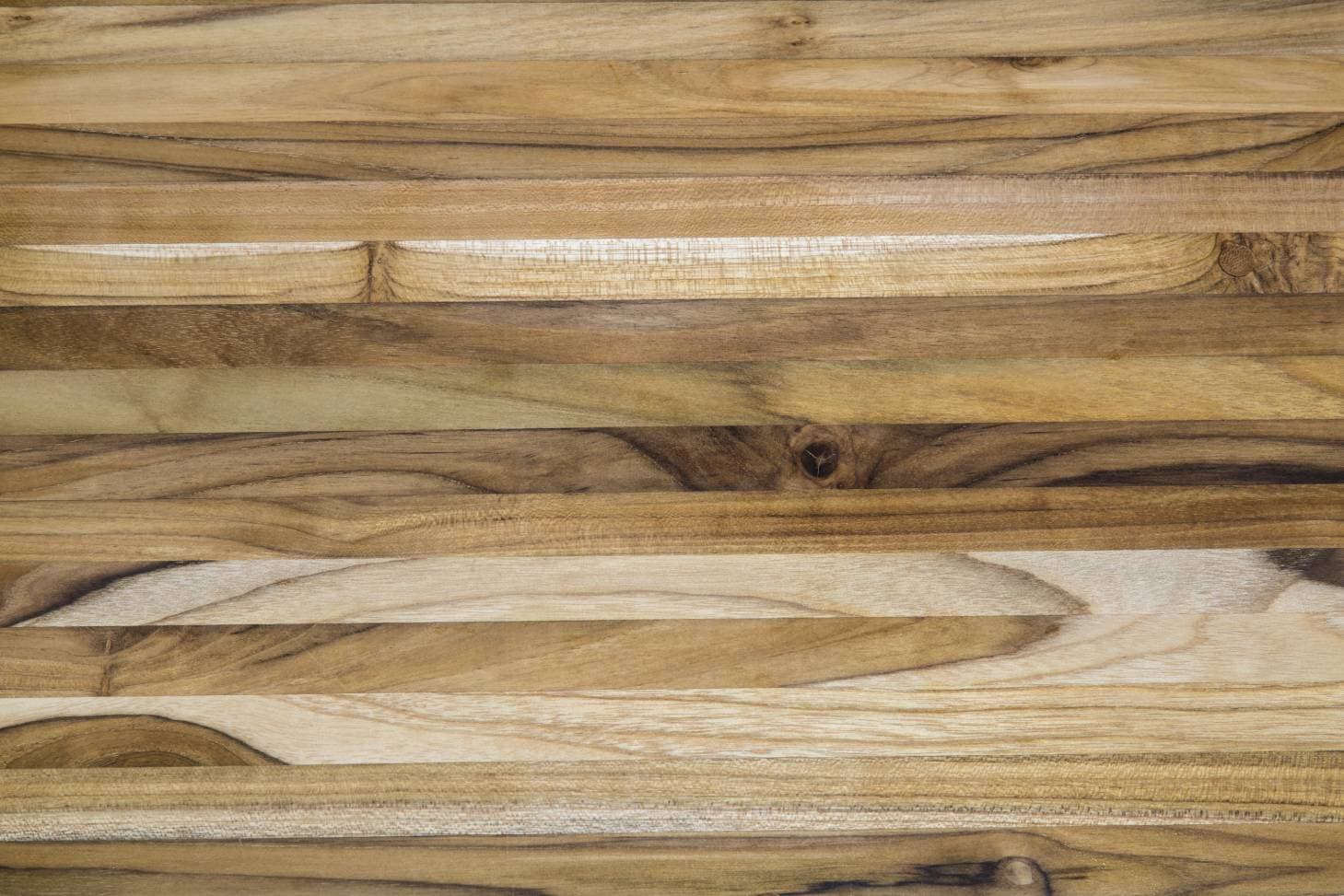
Teak has a hardness rating of 1,150 lbf, which is slightly higher than walnut but still lower than maple and beech. Despite this, it does have a high silica content, which means that knives may still blunt with regular use. Teak shrinks less than other options, but it does have large pores and these can attract moisture, bacteria, and even very small pieces of food waste, so you will have to clean regularly. However, it has a dark color that does a good job of hiding any stains that do occur.
- Dark color hides stains
- Not prone to shrinking
- Warm color looks attractive
- Very expensive
- High silica content dulls blades despite being soft
5. Cherry

Cherry is becoming an increasingly popular butcher block material choice because of its subtle red color, which deepens as it ages. American cherry only has a hardness rating of 950 lbf, so may be best for those kitchen users that don’t regularly cleave large pieces of meat. It has a tight pore structure so will not retain bacteria easily, and won’t stain easily, and it tends to be cheaper than walnut. Cherry wood is harder to come by than a lot of the other options, however.
- Nice red color that becomes increasingly prominent with age
- Tight pores help prevent bacteria
- Shouldn’t damage knife blades
- Soft so can be easily damaged through heavy knife use
- Difficult to get hold of
6. Bamboo
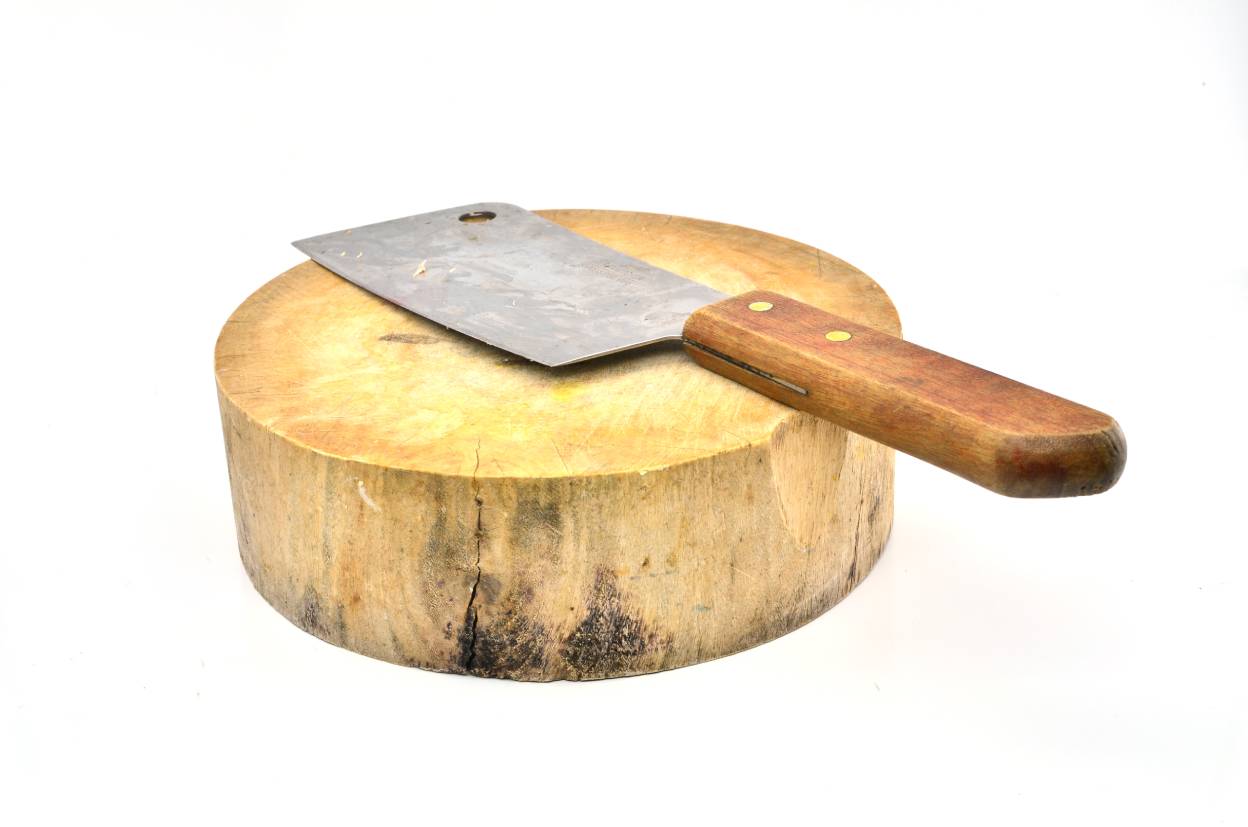
Bamboo is not really a wood, but it is becoming an increasingly popular choice in butcher block and countertop construction. It is environmentally friendly, and it is dense, which means that it has tight pores that will not easily hold moisture or bacteria. It has a hardness rating of about 1,300 lbf which many consider to be the sweet spot because it won’t damage most knives and is difficult to damage itself. It can be an expensive option, but its durability and easy maintenance make it a solid choice.
- Environmentally friendly
- Hard enough to withstand knife use
- Soft enough that it won’t be easily damaged
- Tight pores prevent bacteria and moisture buildup
- Quite expensive
- Quite light so stains will show up
Woods To Avoid
As well as woods that are considered beneficial for a butcher block, there are those that should be avoided. Pine can impart a taste, which might be pleasant in some foods, but you won’t want every meal to taste of pine wood. Ash and red oak are open porous, which means that they can be difficult to keep clean and they will harbor moisture and bacteria. Oak, in general, is not only easily stained but can react with metal to create natural stains, too.
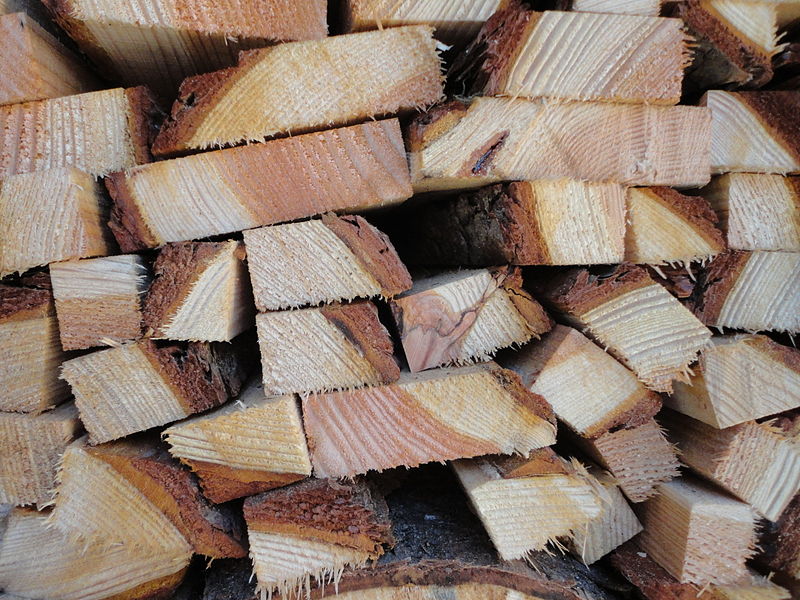
Can You Use Pine For Butcher Block
Pine is inexpensive and easy to work with, but it is also soft enough that it will be easily damaged by cutting and knocking. However, it is non-toxic, so it is considered safe for use as countertop, and if you are going for low cost and visual appeal for a butcher block countertop and will still use chopping boards on top of the unit, it could be a good alternative.
How Do You Make Butcher Block Waterproof?
Typically, it is safe to use mineral oil to treat a butcher block. It is applied generously and allowed to soak in. You will need to do this several times over the first month and then monthly thereafter, but this will provide some degree of waterproofing, depending on the type of wood used.
Conclusion
Butcher block can refer to the traditional chopping board or to a style of countertop. In either case, if you’re looking for an appropriate wood, you need to first consider how you will use the butcher block.
If you will be cleaving meat and using knives directly on the butcher block, the wood should be hard enough that it will withstand this use without becoming badly damaged.
If it is to be used primarily for decorative purposes, as a countertop, and you will still use a chopping board to do any cutting, you have a wider choice of suitable woods.
Generally, however, maple is the most common and popular choice. Bamboo, although not strictly a wood, is also a very good alternative because it is not only durable but it is a more sustainably sourced material.
Featured Image Credit: MikhayLovskiy, Shutterstock
Contents
 Top 6 Butcher Block Woods
Top 6 Butcher Block Woods